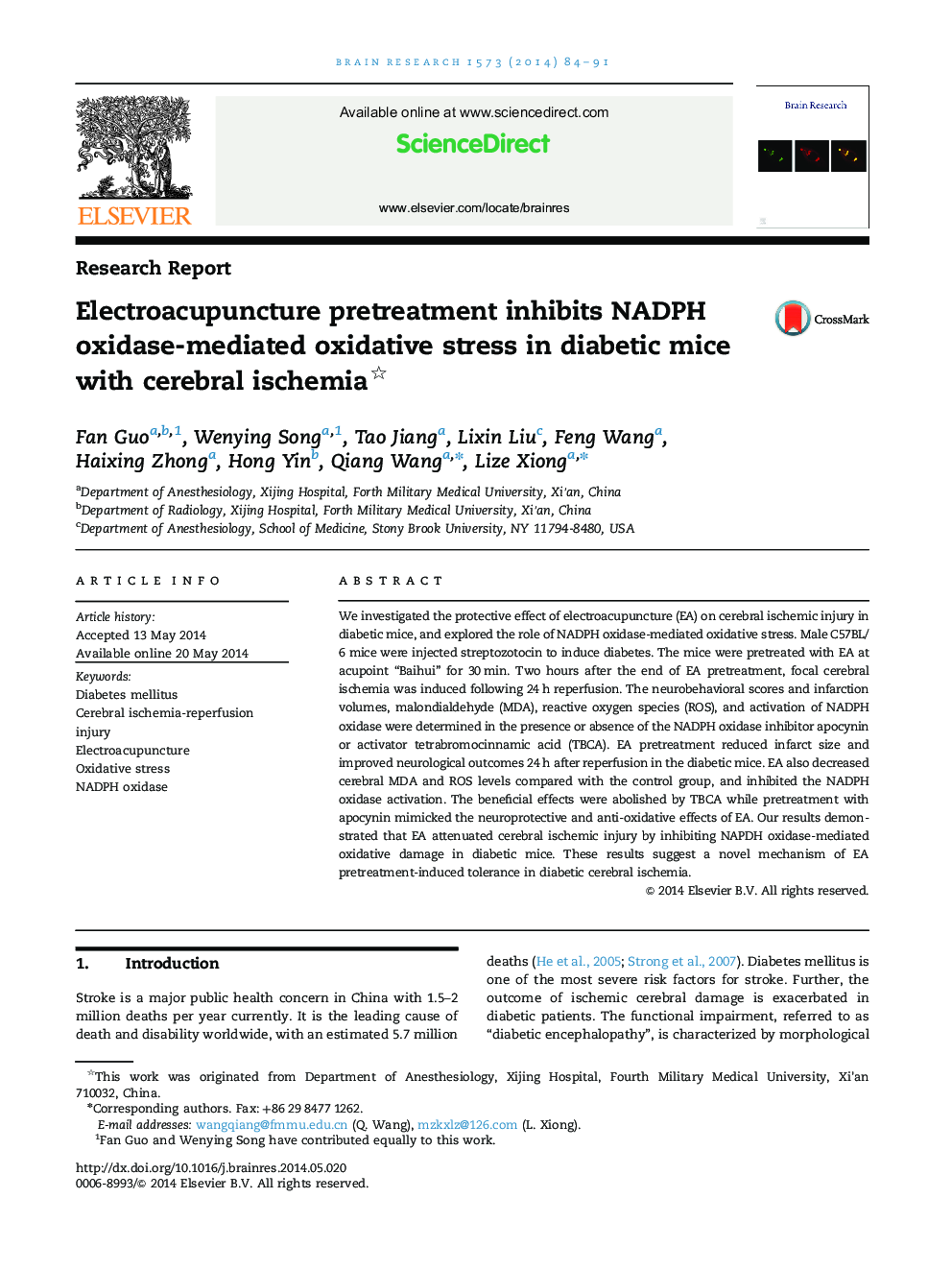| Article ID | Journal | Published Year | Pages | File Type |
|---|---|---|---|---|
| 6263350 | Brain Research | 2014 | 8 Pages |
â¢Electroacupuncture alleviated brain ischemic reperfusion injury in diabetic mice.â¢Electroacupuncture decreased malondialdehyde and reactive oxygen species level.â¢NADPH oxidase was suppressed with electroacupuncture pretreatment.â¢NADPH oxidase activator abolished the neuroprotection of electroacupuncture.â¢NADPH inhibitor apocynin mimicked the protection effect of electroacupuncture.
We investigated the protective effect of electroacupuncture (EA) on cerebral ischemic injury in diabetic mice, and explored the role of NADPH oxidase-mediated oxidative stress. Male C57BL/6 mice were injected streptozotocin to induce diabetes. The mice were pretreated with EA at acupoint “Baihui” for 30Â min. Two hours after the end of EA pretreatment, focal cerebral ischemia was induced following 24Â h reperfusion. The neurobehavioral scores and infarction volumes, malondialdehyde (MDA), reactive oxygen species (ROS), and activation of NADPH oxidase were determined in the presence or absence of the NADPH oxidase inhibitor apocynin or activator tetrabromocinnamic acid (TBCA). EA pretreatment reduced infarct size and improved neurological outcomes 24Â h after reperfusion in the diabetic mice. EA also decreased cerebral MDA and ROS levels compared with the control group, and inhibited the NADPH oxidase activation. The beneficial effects were abolished by TBCA while pretreatment with apocynin mimicked the neuroprotective and anti-oxidative effects of EA. Our results demonstrated that EA attenuated cerebral ischemic injury by inhibiting NAPDH oxidase-mediated oxidative damage in diabetic mice. These results suggest a novel mechanism of EA pretreatment-induced tolerance in diabetic cerebral ischemia.
